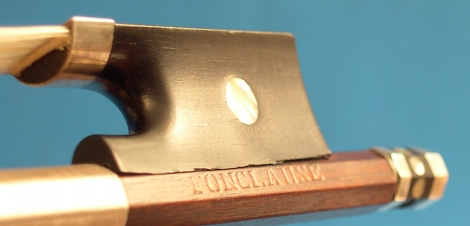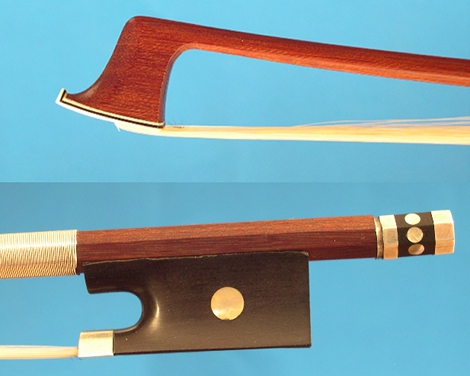CLAUDE JOSEPH FONCLAUSE, THE NICE
Talking about Fonclause, the great masters rank him one or two levels below his well known colleagues we already mentioned, such as : F.X. Tourte, J.P.M. Persoit, E.Pajeot, and, of course, D. Peccatte. But even if it is undeniable that he never reached those heights, it is true that his works own a unique vibrancy and lightness.

It is difficult to explain what exactly the level of this craftsman is, what I consider as most fitting and practical, is a comparison with football. Fonclause was not that impressive and absolute talent as Maradona, who was able to create scoring opportunities even from impossible balls, and was not even like Gattuso, who doesn't oWn good feet, he just bites like a bulldog.
Fonclause was a bit like the dear Beppe Signori, good feet, though not exceptional, but worked a lot for the fun of it. And even if not always, through practice and humility, sometimes he could make plays worthy of Maradona.
Son of Jean-Baptiste and Marguerite Fonclause Frebinet, Claude Joseph was born on April 24, 1799, in Luxeuil, a small town not far from Mirecourt.
He began his training when he was very young (only eight years), with Etienne Pajeot, with whom he worked until he moved to Paris in 1832, and for whom he will build a great number of bows. At this time there is a clear influence of the most illustrious colleague.
After his marriage with Catherine Louise Contal in 1826, and having had two children, Nicolas, and Maurice Sebastie, who will become luthier as well, in 1832 he moves to Paris and begins working for Vuillaume.
In a period of ten years by Vuillaume's workshop, Fonclause refines his technique and style, but probably, due to his already matutre when he moves to Paris, he can not get rid of all the less elegant Pajeot's influences. .
In addition of building normal models, he is probably the first one to build self-reahairing bows. I do not know if you remember the controversy between E. Pajeot and J.B. Vuillaume, the former accusing the latter of stealing the idea. I do not know which one was right, the fact is that immediately after having left Pajeot's workshop, Fonclause begins working for Vuillaume, who immediately after patents and trades the self-reahairing bow. When you say a coincidence!
In 1840, he physically leaves Vuillaume, even if he will go on building for him all during his life and moves to Rue Pagevin, the same one as Henry and opens his own workshop.
During the next years he slightly changes the style of the head, coming very close to Simon's style, so to prove that in the 50's, the collaboration between the two craftsmen was very close.
He dies, as many of them, with the plane in his hand , on January 7, 1862.
The Character

The most striking thing about Fonclause is not at all the sense of aesthetic search of the author. The dear Joseph was a simple mannered guy. Frank, concrete, absolutely not complicated and even a little bit a social climber.
He must have been a lively and smart guy, the head of this bow, without being a classic example (the bevel is almost always much more inclined towards the inside of the throat, and it enters more), recalls lightness and cleverness sensations and all in all not too bad.
Frogs have never been his main peculiarity. I never understood how it was possible to make so cute heads and frogs shaped in such a way. There is not much to say about them; the throat is almost circular, with short ring and button with just one hammered collar. As already said, it is difficult to get rid of Mirecourt.
In any event Claude Joseph Fonclause, even without having reached the top as its predecessors, left us some beautiful works, that, even nowadays, make the happiness of many musicians.
So long.
Paolo.
|
 
 |